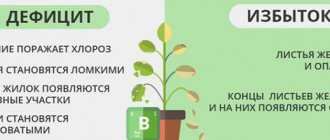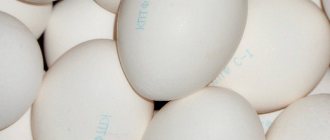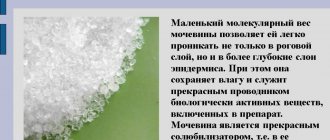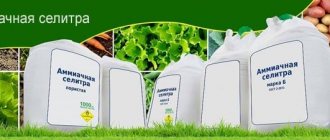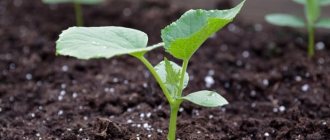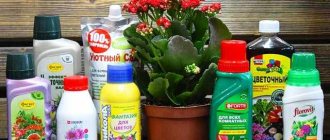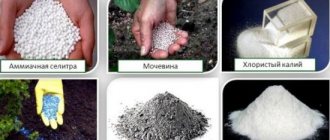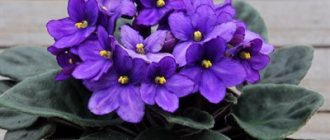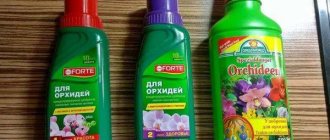Potassium-phosphorus fertilizers belong to mineral preparations. As the name implies, their main components are potassium and phosphorus, and complex types may include other substances. Such fertilizers are widely used by gardeners when growing flowering plants. During the period of laying and appearance of buds, they are recommended to be applied for the purpose of:
- increasing the number of buds;
- approaching flowering;
- extension of flowering time;
- giving flowers a brighter color;
- strengthening the root system;
- faster maturation of young shoots.
A feature of potassium-phosphorus fertilizers is that they do not contain nitrogen or have a small amount of it. This prevents the plant from redirecting its forces to growth to the detriment of flowering.
Among potassium-phosphorus fertilizers for flowering plants, the following preparations have proven themselves well:
- monopotassium phosphate;
- nitrophoska;
- nitroammophoska;
- diammofoska;
- potassium-phosphorus mixture "Autumn".
Potassium monophosphate
Two-component mineral fertilizer contains phosphorus in half of its composition and slightly less potassium. It is used to prepare solutions when watering seedlings of flowering plants (10 g of the drug per bucket of water). Flowers growing in open ground are periodically fed with a more concentrated solution - 20 g of the drug per 10 liters of water.
What fertilizers are phosphorus-potassium fertilizers?
Which fertilizers contain potassium and phosphorus at the same time:
- nitroammophoska – a complex mixture of nitrogen, potassium, phosphorus and sulfur (2%);
- nitrophos - higher phosphorus content, but less potassium and even less nitrogen (suitable for coniferous trees);
- “Autumn” - the main substance is potassium, phosphates and trace elements in small quantities (suitable for peat and sandy soils);
- "AVA" - large doses of potassium and phosphorus, 9 additional components in microdoses.
Video: Expert on phosphorus-potassium fertilizers
If these names of fertilizers with phosphorus and potassium are found in the store, then you can safely take them for your site.
Names of phosphorus-potassium fertilizers for flowers
The following types of phosphorus and potassium fertilizers are used in floriculture:
- potassium nitrate – contains potassium and nitrogen;
- potassium sulfate - potassium with sulfur;
- superphosphate - phosphorus with microelements - sulfur, magnesium, calcium and other useful substances;
- double superphosphate contains double the dosage of the substance.
Double superphosphate is well suited for flowers.
There are certain rules for adding phosphorus fertilizers to the soil for flowers:
- for young plants, the dosage is reduced by half ;
- be sure to water the soil before fertilizing;
- phosphorus is not recommended to be left on the surface of the earth, because it combines with other substances and becomes inaccessible to the root system;
- for indoor flowers, stop feeding in winter;
- phosphorus is introduced in order of priority - after nitrogen and potassium, that is, in the fall;
- The possibility of foliar spraying should be clarified in the instructions.
For outdoor plants, the same recommendations apply as for indoor plants.
Potassium monophosphate - benefits of fertilizer
Percentage of active ingredients: potassium – 28%, phosphorus – 23% . Not the most concentrated of all available types, but with the following advantages:
- compatible with pesticides (chemicals that help control weeds and pests), so can be used simultaneously;
- absorbed by all parts of plants - leaves, roots;
- does not increase soil acidity;
- does not inhibit microflora, thereby not disturbing the soil structure.
Potassium monophosphate in original packaging
Despite the safety of this fertilizer, it is recommended to first remove all weeds from the site, because they also react positively to potassium monophosphate, like cultivated plants. Fertilizer is not recommended for plants that need magnesium or calcium in excess - this fertilizer is absolutely incompatible with these types of microelements.
The drug "Autumn"
The drug contains 18% potassium, 5% phosphorus, as well as calcium, magnesium and boron. Dry powder is added to the soil during the autumn digging of the area where they plan to grow ornamental plants, at the rate of 35 g per 1 square meter. m.
During flowering, immediately before watering, add 15 g of the drug per 1 square meter. m, and to improve the winter hardiness of perennial crops after flowering, they are fertilized with 30 g for the same area.
Seeds are soaked in the solution of the drug before planting, and flowers are also watered at the root.
Ash: the best natural fertilizer
Ash is often mentioned as a fertilizer when talking about organic matter. In fact, it is a mineral fertilizer. And excellent! Ash contains a lot of potassium, phosphorus, calcium and almost all the microelements plants need: sulfur, boron, manganese, magnesium. A glass of ash replaces 40 g of potassium sulfate! At the same time, it is absolutely safe for soil, plants and people.
On heavy soils it is better to apply it during autumn digging, and on light soils - in the spring. But in both cases, it is necessary to embed it into the soil to a depth of 10 cm. If you leave it on the surface, a soil crust will form.
If you add this fertilizer to your compost pile, the organic matter will decompose faster.
Ash should be stored in a dry place, since when moistened it loses its nutritional value.
Do not mix with manure and poultry droppings - this leads to loss of nitrogen.
Types of potassium-phosphorus fertilizers and application methods
Considering that phosphorus is practically insoluble in water, it seems particularly difficult to introduce this element. Thanks to chemists, it became possible to feed the plant more quickly with the substance.
Therefore, there are three main groups:
- liquid or water-soluble;
- sparingly soluble;
- citrate- or lemon-soluble.
The first group is represented by universal complexes, as they are suitable for all types of soil and types of plants. Used for foliar feeding.
You can use the root, application is supposed to be at a shallow depth. From this group, the following have earned particular advantage and popularity: Superphosphates (simple, double), Superphos.
The second group refers to long-lasting ones. Application must be carried out to a greater depth. Phosphate rock, diammophos, vivianite and ammophos are popular. Used in areas with long-term crops. Suitable for growing winter wheat.
The last group of phosphorus-potassium fertilizers is universal. Helps restore all types of soil. Applications are made exclusively to great depths.
A greater effect is achieved when used on acidic soil. More often than others, bone meal, precipitate, and thermophosphates are used on land plots.
Superfos
An excellent fertilizer without chlorine in the composition. Sold in granule form. The substance consists of three ingredients:
- ammonium phosphate;
- ammonium sulfate;
- precipitate.
The application procedure can be planned both for annual crops (in spring) and in autumn after plowing or in the near-trunk circle. The product is universal - suitable for plants at all stages of development.
Bone flour
Unlike many phosphorus-potassium fertilizers, bone meal is considered an organic substance.
When to till the soil
According to the instructions for use, in the spring, nitrogen-phosphorus-potassium fertilizer should be applied after planting, and then in early summer, when flowering is expected. Most of all, at the beginning of their development, plants need nitrogen, so its concentration must be sufficient.
Phosphorus is needed from spring until autumn. At the beginning of the growing season, it ensures the development of the plant, and at the end it increases winter hardiness. Potassium is responsible for photosynthesis and the work of enzymes, improving the keeping quality of the crop.
A sufficient amount of the element can be obtained from a complex fertilizer (nitrogen, phosphorus, potassium) or by using wood ash.
Each nutritional element is irreplaceable and is added in due time to achieve the desired results. You can learn more about the fertilizer needs of different crops in other blog articles.
Cases of overdose
The application of phosphorus-potassium fertilizers should be dosed, strictly according to the recommendations of specialists and chemical manufacturers. It is worth checking the composition of the soil first so as not to exceed the norm and to prevent an overdose of the solution.
Increasing doses and the presence of microelements in the soil leads to:
- decrease in fertility, percentage of harvest compared to previous years;
- increased nitrates in fruits;
- environmental pollution;
- significant harm to consumer health.
Ultimately, an overdose of phosphorus-potassium fertilizers leads to the death of plants and the impossibility of cultivating other crops for 2-3 years.
FEED THE GARDEN
Science and life // Illustrations
Visual diagnostics. Nitrogen deficiency: leaves become slightly yellowish or reddish (1). During acute starvation they begin to fall off. Nitrogen and phosphorus deficiency: after normal flowering and pollination, the fruit ovaries fall off. Potassium deficiency: leaf
Science and life // Illustrations
Science and life // Illustrations
Science and life // Illustrations
Take a closer look at the leaves and much will become clear. In the picture: 1 - healthy strawberry leaf; the rest signal a lack of nutrients: magnesium (2), potassium (3), nitrogen (4).
Science and life // Illustrations
Science and life // Illustrations
Science and life // Illustrations
This is how rhododendron shoots signal a lack of nutrients in the soil: 1 - healthy branch, 2 - nitrogen deficiency, 3 - magnesium, 4 - iron.
Comfrey officinalis. The plant has red-violet flowers collected in drooping racemes. Infused finely chopped leaves and stems of comfrey are an excellent potassium fertilizer.
Three-year-old seedlings simply planted in the ground (left) and in a pre-prepared planting hole (right).
Comfrey officinalis. The plant has red-violet flowers collected in drooping racemes. Infused finely chopped leaves and stems of comfrey are an excellent potassium fertilizer.
Three-year-old seedlings simply planted in the ground (left) and in a pre-prepared planting hole (right).
‹
›
What fertilizers do gardeners buy? Mostly traditional ones are superphosphate with urea, although dozens of others with promising names have appeared in stores. And our health depends on what we choose, because those substances that are embedded in the soil of the garden, one way or another, together with an apple plucked from a branch, end up in our body.
THREE OPINIONS
Instead of understanding the “basics” of agrochemistry and consulting with agronomists, we most often rely on “maybe”. However, experts often create confusion by expressing themselves too vaguely, and sometimes simply not being able to translate scientific facts into accessible language. The information on fertilizer packaging is also insufficiently objective, since sellers and manufacturers, with rare exceptions, are only interested in increasing sales volumes. We are even more confused by the mutually exclusive positions of supporters of “purely organic” farming and “chemists,” whose ranks have recently been replenished by Russian activists for introducing the methods of the American scientist Mittlider (see “Science and Life” No. 4, 1992; No. 6, 1993) .
It is clear that the former call for fertilizing the soil with manure and other organic matter, the latter - only with mineral fertilizers. Similar disputes began 100 years ago, when two authoritative schools confronted each other: soil scientists led by Academician V.R. Williams and agrochemists led by D.N. Pryanishnikov. Now they are both classics of fundamental science, and their followers argue.
A third point of view has also emerged: no fertilizers are needed at all, and the reserves of nutrients in the soil will supposedly last for 50 or even 150 years.
Just in which soils they do not specify. The soil is not nutritious everywhere, and is not at all the same in different regions: the best is on chernozems, in some southern regions and in Siberia, where there is a thick meter-long fertile layer, and the worst is almost everywhere, including in the Non-Black Earth zone of the middle zone. And, as scientists have proven, even the nutrients present in the soil (especially nitrogen and phosphorus) are 50-90% in a form inaccessible to plants. HOW MUCH YOU TOOK, SO MUCH YOU GIVE AWAY
Undoubtedly: in any area, with intensive gardening, even rich chernozems are depleted, annually requiring the replenishment of those nutrients that were removed from them along with the harvest. If you don’t repay your “debt” to the land-nurse, next time you will take, at best, only a small part of the harvest you expected.
According to M. Yazvitsky, from every 100 square meters of garden, along with the harvest of blackcurrants alone, 13 kg of nitrogen, 5 kg of phosphorus, 8 kg of potassium are removed from the soil. But in addition to the three named nutrients, plants need at least fourteen more. We are lucky, however, in that nature itself, without our efforts, forms 95% of the organic mass of a plant from carbon, hydrogen and oxygen, which literally fall from the sky - from the surrounding air and precipitation. But the remaining chemical elements - all of them and in a certain ratio - must definitely be added to the soil.
It is possible to find out exactly what plants need for certain nutrients and to determine the quality of the soil in a garden plot only with the help of agrochemical analysis done in a special laboratory. There are many such laboratories, and the cost of a “diagnosis” reaches 1,500 rubles.
However, insufficient soil fertility, albeit without precise knowledge of its chemical composition, can be judged by the condition of trees and shrubs: weak or intensive growth, yellowish-sick color of foliage and poor harvest. The predominant distribution of certain weeds also speaks eloquently about the quality of the land. For example, on nutrient-rich soil, nettles, quinoa and woodlice thrive, while on poor soil, navel chamomile, field mustard, thistle and spurge grow.
Repeated surveys of many regions, in particular Moscow, show that the soils of 70% of garden plots require significant adjustments in mineral nutrition.
Many people already understand this, but then you come to the site in the spring and rack your brains over what kind of menu the garden needs for the best flowering. WHY BRING YOUR HEAD WHEN THERE ARE ORGANICS?
In fact, why, if organic matter contains almost all the macro- and microelements necessary for plants? It is no coincidence that the ancient Egyptians obtained high yields thanks to the use of silt deposits from the banks of the Nile.
Recently, of all types of organic matter, gardeners in the middle zone, and even more so in the northern regions, prefer peat: black, very black, crumbly, without an unpleasant odor and even without excessive acidity, flavored with lime. This is easy and pleasant to embed into the soil. However, it only superficially resembles chernozem, but in fact, rather, its opposite - “barren soil”, since it contains phosphorus and potassium in small quantities, and nitrogen is in a form that is poorly absorbed by plants. In other words, in terms of nutritional value, a huge Kamaz with peat is equivalent to a small package of nitroammophoska, only the cost of the first is now 7-9 thousand, and the second - 20 rubles. Although, with low fertility, peat is still suitable as an additive to light sandy and heavy clay soils as a kind of “sponge” that retains moisture and nutrition, and also in composts and mulching.
The cheapest organic material is sawdust. But you can’t plant them fresh in the soil - they will “eat up” all the nitrogen. Pre-composting in a heap, which is watered with a strong urea solution (two matchboxes per 10 liters of water), helps to overcome their significant drawback - difficult and slow decomposition.
Free natural fertilizer - wood ash. The amount of nutrition in it, with the exception of nitrogen, is comparable to purchased mineral fertilizers. Thus, the ash from birch firewood and wheat-rye straw contains up to 7% phosphorus, 14% potassium, up to 36% calcium and the whole range of microelements. True, pine-spruce ash is two to three times poorer and, when used in large quantities, excessively alkalizes the soil.
And yet, cow manure is considered to be first-class organic matter, each ton of which contains on average 5 kg of nitrogen, 2.5 kg of phosphorus, 6 kg of potassium, 3 kg of lime, 1.5 kg of magnesium, other necessary elements and millions more beneficial bacteria.
Homogeneous and straw manure (with a bedding of straw) is most saturated with nutrients. With the addition of sawdust (this is what is most often sold) it decomposes slowly, losing a significant part of the nitrogen. However, in many areas, such organic matter has its advantages: it loosens heavy clay soils well, and gives sandy soils the necessary moisture capacity.
If manure is stored incorrectly - just in a heap - up to half of the nitrogen content, alas, evaporates and is washed away by rain within 4-5 months. Therefore, gardeners as quickly as possible cover the manure heap with earth, a layer of weeded weeds, or cover it with roofing felt. But before that, for each ton of it, an incomplete bucket of superphosphate is added. Then beneficial microorganisms quickly multiply there, absorbing and binding ammonia, and the rapid process of decomposition of organic matter begins. Rotted manure is one and a half times more nutritious than fresh manure. Earthworms bring it to an ideal state, saturating it with humic acids and turning it into vermicompost, invaluable for any plants.
I won’t try to dissuade you from purchasing manure, but it is not always available to gardeners, primarily because of the considerable prices and enormous effort required to evenly incorporate it when digging.
It is much more profitable and easier to purchase not a car of fresh manure, but just a canister of ready-made manure. Equivalent to mullein is the incorporation of green manure into the soil - lupine, rye, oats, vetch, peas.
According to the results of many years of experiments by scientists from Michurinsk, it is rational to apply manure to the soil only with the addition of mineral nitrogen fertilizer.
According to A.K. Kondakov, head of the department of agrochemistry of the All-Russian Research Institute of Horticulture named after. I.V. Michurina, the ideal optimal ratio of the content of nitrogen, phosphorus and potassium in dug up soil (under black fallow) is 3:1:4, and when sodding (sowing a lawn) - 4:2:2. This is exactly the diet that you should try to establish for most fruit and berry crops. Alas, it is sometimes impossible to do this only with the help of organic matter, without correction with mineral water. BENEFITS AND HARMS OF “MINERALS”
Mineral fertilizers are, of course, not an alternative, but rather an addition to organic fertilizers and an “ambulance” for plants, sometimes significantly easing our worries. I know from my own practice that in some cases it is mineral fertilizing that helps quickly eliminate the deficiency of a particular nutrient in plants. Moreover, pharmaceutically accurate and, as a rule, small doses of the drug in grams are used. Adjustment of plant nutrition must be timely, otherwise a continuing deficiency of one substance in the soil will inevitably lead to a reduction in the supply of another.
I have been convinced more than once by myself and from the experience of my neighbors: it is not mineral fertilizers themselves that are harmful, but their illiterate use - in bulk, with a large excess, and indiscriminately.
Typically, gardeners' concerns relate to the use of nitrogen. Initially, the soil contains a lot of it - on average 30 kg per hundred square meters, but exclusively in organic form, insoluble in water and inaccessible to plants. Nitrogen is gradually, albeit slowly, converted into accessible mineral form by soil microorganisms, and its rapid supply to plants is usually ensured by mineral fertilizers.
Excessive nitrogen fertilizing leads not only to excessive growth of green mass and deterioration in the quality of fruits, but also to poisoning of the plants themselves: if they do not die, they suffer greatly. Newly planted ones take a long time to take root, do not grow, and their winter hardiness decreases. The abundance of nitrogen is especially harmful during drought.
But for some reason the use of phosphorus and other mineral salts is considered safe. Of course, excessive doses of phosphorus, unlike nitrogen, do not “burn” the roots, and when mixed with humus they often give good results, but in the end photosynthesis is disrupted and the absorption of nitrogen and potassium, as well as boron, copper and zinc, becomes difficult. An unnatural “hunger” begins.
According to the latest data, with the excessive use of seemingly safe superphosphate, we excessively pollute the soil with harmful ballast, in particular fluorine, or even more toxic elements, including arsenic, lead, strontium and other soil pollutants.
Excessive application of seemingly no less harmless potassium is harmful in that it creates an imbalance of substances in the soil and, accordingly, makes it difficult for plants to receive sodium, calcium and boron - a whole complex of elements. And without them, full development and fruiting are impossible.
That is why, according to Professor B. A. Yagodin (Moscow Agricultural Academy), any fertilizers must be used exclusively correctly. As a result of many years of research, the scientist came to another conclusion: up to 95% of Russian soils are poor in such essential microelements as selenium, copper, cobalt, iodine, lithium, magnesium, boron; They do not accumulate enough in plants and, accordingly, in our body. As is known, all of the listed substances increase immunity, liver and kidney functions, neutralize and remove mercury, arsenic and lead, and also protect against cancer and cardiovascular diseases.
From this it is clear that it is extremely important to saturate the soil with the entire complex of useful substances, especially since microelements (for example, cytovit) are now produced and sold in an organic form that is most accessible to plants, especially with foliar feeding - spraying leaves. Using this simple technique - treating the crown with a 0.3-0.5% solution - you can greatly reduce the doses of conventional macroelements (nitrogen, phosphorus and potassium). This fertilizer works quickly even on frost-damaged trees and shrubs. It is also recommended for low spring temperatures.
New bacterial fertilizers - bactophosphine and azotovit - significantly reduce the gardener's worries about saturating the soil with basic nutrients, the application of which multiplies and activates the soil microflora.
Bactophosphine consists of a huge number of beneficial bacteria that can dissolve hard-to-reach and poorly digestible phosphorus compounds accumulated in the soil.
Azotovite is unique in that it is able to accumulate nitrogen directly from the air (almost 80% of it is there), like nodule bacteria on legumes, while neither urea nor ammonium nitrate is required, the overall nutrition of plants improves, their resistance to diseases increases, and also, as I noticed, and the safety of the fruit.
In the last dry season, which was not very favorable for berry growers, a bed of strawberries, fed with the two named preparations (5 g per bucket of water), produced noticeably more large berries, and they were tastier than those in the neighboring plot. FERTILIZERS WHEN PLANTING
As a rule, when planting a seedling, either no fertilizers are added at all, or they are applied in excess. In the first case, the plant is condemned to slow development, and its fruiting is delayed by 3-5 years. In the second, the result is often worse: a burn of the roots with the inevitable death of a seedling purchased for a lot of money.
I myself have gotten into trouble more than once. Let's say, many years ago I destroyed the newest varieties of cherries brought from afar. And all because I used fresh manure when planting - a typical mistake of novice gardeners, unfortunately, not the only one.
Sometimes in books on amateur gardening there is disastrous advice to plant half-decomposed mullein at the very bottom of the hole when planting a seedling, separating it from the roots with a layer of soil. This is only correct at first glance. In fact, with insufficient air access, manure begins to release toxic volatile substances, in which the roots gradually suffocate. However, it is even more often recommended to limit the tree’s long-term nutrition to a starvation ration - adding only the top layer of soil to the planting hole, although it is not always fertile enough.
What to follow when landing? The principle here is clear: nutrition should be optimal and not for one month, but for the first two to three years of seedling development. It is optimal, since an excessive concentration of mineral salts, especially nitrogen, slows down the establishment of seedlings, or even completely destroys them. Therefore, first of all, provide the new tree or bush with sufficient nutrition area. On not very fertile soil, the diameter of the planting hole for pear and apple trees is desirable up to 1 m, and for stone fruit, berry and ornamental plants - 50-70 cm. The depth of the holes is 80 and 40 cm, respectively.
2-4 buckets of completely rotted (3-4 year old) manure are added to a large planting hole, or better yet, 3-5 buckets of compost or 1.5 buckets of vermicompost (ideal), 1 kg of wood ash and no more than 200-300 g double superphosphate. For stone fruit and ornamental crops, the dose is reduced by half, and for currants and other shrubs, add a bucket of any organic matter, a tablespoon of mineral fertilizer and 200-300 g of ash. For garden strawberries, a hole with a diameter of 15-20 cm is sufficient; 200-300 g of organic matter is added to it, as well as 50 g of ash and only a teaspoon (5 g) of superphosphate.
Nitrogen is not used when planting any plants.
All fertilizers are mixed with the compost as thoroughly as possible, applied to the lower part of the hole and distributed evenly along its side walls. Do not add it directly to the roots - there should only be good fertile soil, perhaps with the addition of vermicompost.
And if there is neither vermicompost, nor completely rotted manure, nor compost on the site, commercially available fertilizers will help.
Firstly, organic, from processed horse or poultry humus, with the addition of microelements - “A gardener’s dream”, however, you will have to use at least 5-10 bags weighing 1 kg. Secondly, the organo-mineral fertilizer “Universal”, also with a set of macro- and microelements. All nutrients are contained inside peat granules, so they do not burn the roots, but act gradually and for a long time. Thirdly, I recommend using natural “dopings” such as sodium or potassium humate. Every time I am convinced of the need to use Sakhalin sodium humate for the rapid establishment of many plants - the solution should be no stronger than drunken tea. THE DIFFERENCE IN THE “DIET”
Already two years after planting, seedlings of apple, pear and other fruit crops require additional feeding. Without agrochemical analysis data, we have to be guided by average application rates (on medium and low-fertility soils), adding when digging the soil “under the shovel”: 250 g of complex fertilizers (for example, “Sudarushka”, “Rastvorin”, “Kemira”) or a mixture of 25 g of ammonium nitrate, 100 g of superphosphate and 30-40 g of potassium sulfate per 1 m2. On acidic soils, the phosphorus-potassium “mineral water” will be replaced by 200-300 g of ash, and on slightly acidic and neutral soils - half its dose.
In addition to these fertilizers, you will need 5 kg of organic matter, preferably compost, but in the spring you can also apply fresh manure. Those who do not use mineral fertilizers at all have to double this dose.
If at a young age and in the first one or two years of fruiting the plant’s need for nutrients is relatively small, and nitrogen predominates in the overall removal from the soil, then with increasing yields their “appetite” increases sharply. Compare: a young apple tree removes 48 g of nitrogen, 7 g of phosphorus and 42 g of potassium from the soil, and after a few years, having entered fruiting, it takes up almost 20 times more, 903, 128 and 883 g, respectively. Ignore such a change - and the yield will fall many times. Moreover, we have to take into account the individual “tastes” of plants. For example, in an adult apple tree, and especially in a pear, there is a clear attraction to potassium, while in cherries and plums there is still a preference for nitrogen. Therefore, the dose of potassium for the former is increased almost 2.5 times, which helps to avoid the frequency of their fruiting and improves subsequent overwintering.
But, as mentioned above, it is also impossible to oversaturate the soil with potassium, since this, among other things, will reduce the trees’ resistance to diseases. To prevent anything like this from happening, I prefer to use organic potassium fertilizer from... weeds for pomegranates - an aqueous two-week infusion of finely chopped large leaves and stems of comfrey (1:8).
Mature cherries and plums, compared to pome trees, annually remove twice as much nitrogen from the soil. But even here it is dangerous to overdo it: applying excessive doses of urea or ammonium nitrate (more than a matchbox per 1 m2), especially with insufficient subsequent watering, inevitably leads to metabolic disorders in plants. By the way, an alternative to chemical nitrogen is organic, which, along with other useful elements, is contained in a fresh week-long infusion of gooseberry and quinoa, again weeds. You have to “treat” the tree trunk circles of stone fruit crops every decade with this infusion.
I will clarify the timing of fertilizing all fruit crops: with nitrogen - early in the spring, which promotes fruit set, and after flowering, which favors the formation of the next flower buds and good fruiting in the next season;
phosphorus-potassium fertilizers - during the dormant period, in October or April, before the start of the growing season. Since both elements are inactive and do not “spread” throughout the garden, try to distribute them evenly among the tree trunk circles, and not on the surface, but directly in the area where the roots are located - at a depth of 40-50 cm. It is better to do this using not a shovel, but and... scrap, which is used to carefully make holes. Some gardeners dig in pipes under young trees in advance, and in April and late autumn pour a fertilizer solution into them (for example, potassium monophosphate). “APPETITES” OF BERRY BERRY
BERRY plants are insatiably “gluttonous” already from the age of three, and black currants are especially distinguished by this. Most of all, it consumes nitrogen, then, in decreasing order, potassium and phosphorus. During the growing season, nutrients are not consumed evenly. Nitrogen is most intensively absorbed during the period when bushes emerge from dormancy and when buds open. Already by the time of flowering, its consumption is halved and remains at the same level for two to three months, until the berries ripen. And after harvesting, at the beginning of leaf fall, the intensity of nitrogen use increases again - it is then vital for the development of roots.
In addition to nitrogen, currant bushes from flowering to filling berries require potassium and phosphorus in a ratio of 1.5:1. If they are deficient in early spring, many defective flowers are formed, shoot growth slows down and plants prematurely enter a dormant period.
If you want to have powerful bushes with strong shoots and, accordingly, a high annual yield, provide them with potassium-phosphorus nutrition in a timely manner in the root area. The best fertilizer for currants, in my opinion, is “Mortar” produced by the Buysky plant.
But under the gooseberries, the same “Solution” is applied shallowly - almost at the very surface of the soil and near the base of the bush (most gooseberry roots do not go deeper than 5 cm and do not spread further than 40 cm). Ash and comfrey infusions often help out as additional potassium nutrition.
Raspberries love highly fertile soil and do not tolerate chlorine-containing fertilizers. It feeds on nitrogen in early spring and after picking berries, and potassium and phosphorus during flowering and fruit set. It just consumes them in almost the same quantities. For 1 m2 of raspberry garden, I advise you to apply 2 kg of organo-mineral fertilizer “Universal” or 12 kg of rotted manure in combination with fertilizing with herbal infusions of squash and quinoa. Due to the superficial location of raspberry roots, organic matter is also desirable as a permanent mulch.
It is not uncommon for raspberry bushes to experience boron starvation, accompanied by the death of the tops of young shoots with a delay in bud opening in the spring. Therefore, in autumn and early spring it is useful to use boric acid as a top dressing, or better yet, the special Mag-Bor fertilizer.
Adult bushes of garden strawberries are fertilized with complex chlorine-free fertilizer “For strawberries and wild strawberries”, containing nitrogen, phosphorus, potassium and all microelements. This is done at the very beginning of the growing season, in April, as well as during flowering and when fruit sets.
During the budding period during spring cooling, foliar feeding with a weak urea solution (0.3%), and every other day with potassium monophosphate (0.5%) significantly helps. In the second half of summer, plants especially require nitrogen and phosphorus - the next year's harvest depends on the level of nutrition at this time.
Plants recommended for green fertilizer:
- Broad beans are a rich source of nitrogen and grow best in heavy soils.
- Winter vetch and field peas enrich the soil with nitrogen and organic matter.
- Field mustard is a source of phosphorus, sulfur and organic matter.
- Buckwheat - enriches the soil with organic matter, phosphorus and potassium, especially recommended for heavy soils.
- Annual lupine is a source of nitrogen, phosphorus and organic matter. Green fertilizer from lupine is close in nutritional value to manure.
- Oats - enriches the soil with organic matter and potassium.
- Phacelia is a good nitrogen fertilizer.
- Winter rye enriches the soil with organic matter, nitrogen and potassium.
How not to harm the soil and crops
The fear of nitrates did not arise out of nowhere. Decades ago, farmers diligently applied nitrogen to produce bumper crops.
The volume of agricultural products grew, but the quality left much to be desired - plants overfed with nitrogen could not be stored for long, contained nitrates and nitrites, and were not of high quality.
To maximize profits, cheap saltpeter was used in huge quantities.
Modern agronomists have learned to wisely fertilize with nitrogen, phosphorus, and potassium - they accurately dose the preparations and adhere to the prescribed deadlines. As a result, the soil is enriched, the quality and taste of the crop improves, and the volume of agricultural products increases.
Organic lovers should know that adding fresh mullein at the end of summer is fraught with the same problems as excessive use of saltpeter. It is correct to apply manure in the spring, and then only by choosing crops that are not afraid of an excess of the substance.
In addition to the dosage, you need to know the best time to use nitrogen-phosphorus and potassium fertilizers, take into account the characteristics of the soil and the growing stage of the plant.
Nitrophoska and nitroammofoska
Nitrophoska is a classic mineral fertilizer. It contains 3 main substances that are necessary for the full growth and development of any plant - phosphorus, potassium and nitrogen. These components are included in the product in the form of salts: calcium chloride, potassium nitrate, precipitate, superphosphate, ammophos, ammonium nitrate and ammonium chloride. Other impurities such as gypsum are present in minimal quantities.
The percentages of the three main components may vary. This is how the product is labeled. For vegetable and garden plants, the 16-16-16 grade is usually used, which means the same amount of all three main ingredients. As for crops that are grown with fergitation, they also require magnesium, so the formula will look different - 15-10-15-2.
There are different types of nitrophoska. There are several groups depending on the method of obtaining and using the product:
- Sulfate. Typically used for tomatoes, beans, cabbage, and cucumbers. It should be applied at the time of planting. Sulfur is necessary for the formation of plant-type proteins. It has a fungicidal effect, so it prevents the appearance of various pests.
- Sulfate. The use of such a product applies to ornamental plants and flowers, as the concentration of calcium increases, which has a beneficial effect on flowering.
- Phosphorite. Typically, this product is used for tomatoes, since phosphorus is required for fiber to be better absorbed. Thanks to the timely application of such a product, the harvest becomes better and more abundant. In addition, tomatoes can be stored longer.
Nitroammofoska is also a very popular fertilizer. Its main components are also potassium, phosphorus and nitrogen. Sold in granular form. Typically used for main and pre-sowing application. The solution is used as an additional fertilizer.
Nitroammophoska is characterized by a high concentration of all components. Nitrogen is contained in a form that is easily assimilated by plants. Phosphorus is included in the form of ammonium phosphate, dicalcium phosphate and monocalcium phosphate. All the main components are necessarily present, but their content differs in different brands. The most popular is 16-16-16 with an equal volume of the three main feeding substances.
The advantages of this fertilizer include the following:
- The granules do not cake during long-term storage.
- The product is highly concentrated.
- All three main substances are present in each granule.
- Quickly dissolves in water.
- Increases harvest volume (by about 40-70%).
As for the disadvantages, they are as follows:
- The substance is inorganic.
- Nitrates form in the soil.
- The shelf life is short - no more than six months.
- It is highly flammable, so do not allow the substance to heat up. The temperature should be no more than 30 degrees.
Nitroammophoska is better suited for alumina and chernozems. The denser the soil, the more difficult it is for substances to penetrate into it, so in clay soils it is recommended to apply the substance in the fall, and for lighter soils (for example, sandy), the procedure can be carried out in the spring.
Organic fertilizers for indoor plants
Organic fertilizers include: manure, litter, compost, humus - excellent suppliers of nitrogen, and wood ash - an excellent source of potassium and calcium.
There is a lot of debate among specialists and experienced gardeners regarding the advisability of feeding indoor plants with organic fertilizers.
We can say for sure that organic fertilizers make the soil mixture more moisture- and breathable, especially the periodic application of humus, and stimulate the active growth of green mass.
Wood ash, according to leading experts, is the most perfect organic fertilizer for indoor plants.
We talked about it in detail in the additional material to this article about home fertilizers.
Peculiarities
Organic or natural fertilizers for indoor plants have their own specifics. Organic fertilizers are not suitable for bulbous and corm species, and variegated decorative-deciduous plants can become ordinary green if improperly fertilized.
Preparation
Before feeding plants, organic matter must be sterilized. Sterilization is carried out only with the help of fire, and after that it is kept for 20-25 days to restore the biological environment.
- Therefore, experts advise buying organic supplements in ready-made form.
Application
Flower growers recommend using mullein infusion (one tablespoon per one liter of water) or bird droppings (one teaspoon per one liter of water).
This fertilizer is recommended for use for large and fast-growing plants, and it has a particularly beneficial effect on asparagus, vines, indoor roses, palm trees, pelargonium and primrose.
| A unique complex fertilizer increases the yield up to 10 times! |
Vermicompost for indoor plants
Many experienced gardeners believe that it is better to use organic fertilizers for indoor plants (except ash) based on vermicompost (Vermistim, Humisol).
In the composition of such fertilizers, pay attention to the % of humic substances (salts or acids).
Application of vermicompost
We offer ways to use vermicompost for indoor plants and seedlings, namely the substance itself, and not a liquid concentrate (extract).
- For nutrient substrate. Vermicompost, garden soil, sand – 1:4:1. This universal recipe is suitable for planting and replanting many types of indoor plants, but certain types require individual amendments.
- To accelerate root formation. 1 tsp. per 100 ml of water - place a cutting of a houseplant in this nutrient solution.
- For mulching and fertilizing. A layer of soil mixture (1-2 cm) is removed from above and vermicompost is poured in its place, and then watered with water. This bookmark lasts for about 2-3 months.
- For feeding. 5-6 tbsp. l. Vermicompost is dissolved in one liter of water and left for 24 hours. Then water the plants and flowers every 10-14 days. Before this, the solution must be stirred.
.
One of the options for organic fertilizer with vermicompost
.
Peculiarities
The pH of vermicompost is 6.5-7.5, almost neutral. Vermicompost may contain worker worms, but they do not damage the plant, and after they grow up they can be thrown outside. It is undesirable to sterilize vermicompost - its beneficial properties are lost. Real vermicompost does not mold.
Potash fertilizers - what are they, their names, meaning and application
Adding an article to a new collection
For proper development, every plant needs important nutrients. One of them is potassium. If there is a deficiency, garden, vegetable and ornamental crops should be fed. We will tell you when and how to apply potash fertilizers.
Any crop needs potassium more than any other nutrient. In plants, potassium mainly accumulates in the cytoplasm and cell sap. There is less of it in roots, seeds, tubers and any old parts of plants than in young leaves and stems.
Thanks to this substance, the metabolism of proteins and carbohydrates in cells improves, sugar accumulates, photosynthesis accelerates, the plant tolerates drought better, and adapts to low temperatures and pathogenic organisms. Potassium is especially important for flowering plants, since when it is deficient, the buds either do not set at all, or the flowers grow very small.
This is what plants that lack potassium look like
The importance of potassium fertilizer is difficult to overestimate. If there is not enough potassium in the soil, then the flowers and fruits of the plant do not form. Therefore, you can be left without a harvest. This element is indispensable for the development and growth of sunflower, buckwheat and various vegetables, in particular beets and potatoes. But grain crops are less sensitive to potassium deficiency.
Signs of potassium deficiency and excess in plants
If a plant lacks potassium, ammonia begins to accumulate in its cells. This leads to instability to fungal diseases and the death of shoots. After all, the formation of protein and the synthesis of complex carbohydrates stops in plant cells.
However, excess potassium also negatively affects plant development. Therefore, unlike phosphate fertilizers, you need to be careful with potash fertilizers and not exceed the dosage.
Potassium deficiency mainly affects crops growing on light peat soils, since this element is better preserved in heavy clay soil.
Advantages and disadvantages of application
Feeding plants with any types of fertilizer mixtures is necessary throughout the growing season. Plants urgently need nutrients at the initial stage of growth and in greenhouse conditions.
At the same time, at the stage of fruit formation, during fruiting, the need for additional feeding arises.
The combination of microelements and their percentage will be changed accordingly. Phosphorus-potassium fertilizers increase the number of fruits, the immune system, and improve appearance.
There are crops that require phosphorus and potassium during development from spring to autumn:
- garlic;
- vine;
- tomatoes and cucumbers;
- strawberries, raspberries;
- currant bushes (red, black).
Need to know! Phosphorus is not added as often as potassium or nitrogen. In this case, it is worth taking into account the peculiarities of the element’s action. Thus, phosphorus will be useful for annual crops in the spring. For perennial plants - in autumn.
The positive aspects of applying phosphorus-potassium fertilizers will be, taking into account the moment of feeding:
- strengthening the root system;
- better entry into the “winter period”;
- a supply of necessary substances to fight infections;
- strong immunity for all cultures;
- abundant flowering, fruiting for next year or current;
- improvement of the external data of the harvested plant.
How are mineral components added to the soil?
From all that has been said above, we see that all these elements vital for plants are introduced in approximately one period. Therefore, it makes sense to think about using nitrogen-phosphorus-potassium fertilizers; it’s easier and more convenient, which means that even a novice gardener can take care of his children.
It should be noted that they are introduced in any season; the ratio of nutrients is simply adjusted. In spring, fertilizing is necessary to prepare the soil, filling it with useful minerals. Fertilizer is often applied while plowing fields. However, if you want to save a little, then in your garden you can add it directly to the holes before planting, although then you will have to spend a lot more effort.
With the onset of summer, fertilizing is carried out during watering, then the plants will absorb a maximum of micro- and macroelements, which will contribute to a good harvest. This season, residents of garden beds especially need potassium, which will help them survive the drought. But by fertilizing the soil in the fall when digging the beds, you normalize its balance. After all, during the season, agricultural crops have almost completely depleted land resources, and next year we will certainly want to harvest an excellent harvest again.
It is worth noting that while nitrogen and potassium can be applied superficially, the use of phosphorus fertilizers requires significant grounding, of course, without fanaticism, just as close as possible to the root system. Phosphoric acid moves very quickly and becomes fixed in the soil, and our goal is for it to saturate the plant. In addition, the phosphorus component should not be mixed with the soil too thoroughly.
The best folk remedies for flower growth
Plants were fertilized long before the advent of store-bought products. For feeding we used available materials:
- Ash. Disinfects the soil and protects plant roots from rotting. In dry form, it is used when transplanting plants. You can also make an infusion from it and use it as a supplement. To do this, you need to dilute a spoonful of ash in a liter of water.
- Nettle. Revitalizes depleted soil. To prepare the tincture, you need to take 100 grams of herb and add a liter of water. After a day of infusion, the concentrate is diluted with water in a ratio of 1:10.
- Yeast. They stimulate plant growth by activating the release of carbon dioxide in the soil. A yeast infusion consists of 10 grams of this product, a tablespoon of sugar and a liter of water. The liquid is infused for 20–23 hours and then diluted with water 1:5.
Despite their beneficial properties, folk remedies are not self-sufficient. They are not able to provide plants with all the important elements and must be supplemented with other fertilizers.
For which crops is it suitable?
The development of strong plants is a consequence of the correct application of nutrients. Thus, phosphorus is necessary for general strengthening, making the crop resistant to diseases, frost, and mechanical damage.
Potassium is needed for an abundance of fruits, budding, and flowering. But not every vegetable/fruit or flower will respond well to regular feeding.
There are also those that are quickly saturated with microelements. And when phosphorus-potassium fertilizer is applied again, they lose their shape, color, weaken, and stop development.
For tomatoes
This crop is very sensitive to the lack of fertilizers in the soil. With a deficiency of phosphorus, the fruits become ugly, spots with dry, as if burnt skin appear on them, and the taste loses its sweetness. Potassium plays one of the leading roles in the formation of green mass, and therefore one cannot expect the appearance of a healthy bush where there is little of this element in the soil.
Tomatoes are fertilized both with compounds with only one mineral and with complex ones.
Plants in a greenhouse require less fertilizer, and therefore the dosage indicated on the packaging of the drug must be reduced.
Greenhouse and ground tomatoes are suitable for spraying with an infusion of wood ash. It will also be useful to spray a solution of potassium monophosphate on the leaves - the greens will become fuller, and the fruits will be sweeter and larger. But be careful, do not carry out this procedure on sunny days: droplets of water will become small lenses, refracted through which, the sun's rays can burn the leaves, which will lead to plant disease and the suspension of fruiting.
For cucumbers
Cucumbers react very sharply to the lack of useful minerals in the soil. That is why it is recommended to fertilize them 4-5 times per season. Fertilizers based on potassium and phosphorus are suitable for these purposes like nothing else. If the bush grows poorly, the shoots are thin and lifeless, small leaves quickly fall off, you need to feed it with phosphorus. A bluish color in greenery, bronze spots and a falling ovary indicate a lack of potassium. Complex fertilizers solve both problems.
Potassium monophosphate will help quickly bring the plant back to life, and complex feeding repeated after a couple of weeks will consolidate the rehabilitation effect. Cucumbers respond very well to the addition of wood ash or its solution to the soil. You can also treat foliage with it - beneficial substances are well absorbed not only through the roots.
Adding ordinary yeast to the potassium-phosphorus mixture is beneficial for the growth and fruiting of cucumbers. The root system develops better, and the soil is saturated with beneficial bacteria.
For the garlic
This vegetable also loves fertilization with potassium and phosphorus, and therefore any gardener is simply obliged to set aside a date in his agronomic calendar for this event. It is carried out regardless of the appearance and growth activity of garlic, since it always has a beneficial effect on the yield of this crop and the presentation of the heads.
For feeding, both mineral fertilizers from the assortment of specialized stores and simple ash in dry form or powder are used. Scheduled fertilization is carried out in early June. You can also periodically dust the bed with ash before watering.
If you find signs of phosphorus or potassium starvation in garlic - marginal leaf burn, yellowing, wilting - then you should rush to treat the bed with a nitrophoska solution. After this, it will not be amiss to periodically water it with a solution of ash, since it contains all the necessary substances in a bioavailable form, and it is also harmless.
Fertilizing strawberries
Strawberries are another berry that is not indifferent to feeding. It needs to be fertilized with mixtures containing mainly potassium and nitrogen, but it will not refuse complex phosphorus fertilizer. Here it is important to observe the timing of fertilizing, since this directly affects the yield and taste of the berries.
The first time the garden bed is fertilized is in the winter, or a couple of months before planting strawberry bushes in it: the fertilizer is scattered over the bed, then dug up. The second time you should fertilize strawberries after fruiting is complete. This will help the plants form new buds and regain strength.
Strawberries should not be fertilized during flowering or fruit ripening.
The last feeding is carried out in September. This contributes to better frost resistance of strawberries, and also helps them prepare for winter. In addition, such a “background for the future” will significantly increase the yield next year.
Growing grapes
The grapes should be fed using the full method once every few years (the frequency depends on the type of soil and area), and during the entire growing season a certain amount of additional minerals should be added. Feeding is carried out in several stages.
The first time to fertilize grapes is in early spring, when they have just blossomed. A complex fertilizer containing nitrogen, potassium and phosphorus (any will do) is poured into each hole with a bush, then it is covered with a layer of soil and watered. This “dry” fertilizing can be replaced by watering - for this, a water-soluble complex fertilizer is used.
The grapes should be fertilized a second time before flowering. Feed with a liquid method and additionally water afterwards with plain water for better penetration to the roots.
When the set berries become approximately the size of a pea, it is time for new feeding. A solution with a low concentration will be sufficient, but this is one of the most important stages of fertilizing, since in this way the yield can be almost doubled.
When the berries are close to ripening, it is worth feeding the grapes again. At this stage, you can use fertilizers that contain only phosphorus and potassium, but no nitrogen - otherwise the strength of the grapes will be thrown not on the berries, but on the foliage.
Of the four feedings, two are mandatory - before flowering and the final one, before fruiting.
Grapes can be fed with both mineral complex and organic fertilizers. Among those classified as phosphorus-potassium, these are wood ash and its infusion.
